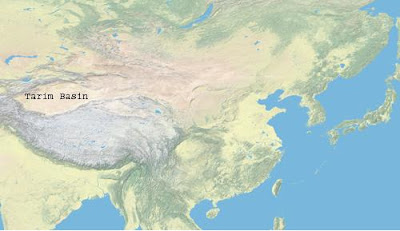From the Archives: Investing the Personal with the Political in Chinese Film
If you're looking for an old Chinese film, I have four to share with you. On October 6, 2008, Stanford Professor Bang Wang spoke at the CEAS Humanities Colloquium: "Love and Politics in Chinese Film." In this cinema studies presentation, Wang spoke about four films: Nie er, Zhao chun er yue, Fu rong zheng, and Wo do fu qin mu qin.
The films are set in a time when the public realm was reserved for nationalism and political activity. Subordinating the individual to the party, the early CCP represented procreation as a means of expanding organizational capacity. Though early films were censored and propagandistic, the representation of private desire still poked holes in the system. Passion exploded as a means of accessing the sublime in private. The degree of sublimation varies from film to film, as each decade reacted against the political turbulence of its precedessor. These representations also vary by gender.
In his first section, "Love and Patriotism," Wang showed a clip from Nie er (1959), a film about the composer of the national anthem. To honor the PRC's 10th anniversary, the movie celebrates the young nation. Foregrounding the 1930 Japanese invasion, a woman leads the way in the clip. In the relationship between Nie er and his more mature girlfriend, passion for Communism legitimizes romantic passion (similarly, in the Spanish-language film El crimen del padre Amaro (2002), a priest and his lover couch their physical passion in terms of religious passion). As the camera pans the surrounding landscape, the filmmaker invests the scene with a wider scope, embracing patriotism as a form of sublimation. Like the attitude of today's Chinese towards the Olympics, the personal intertwines with the political.
The second section, "Love and Idealism," featured a clip from Zhao chun er yue (1964), 'early spring in February.' It takes place after the second revolution failed in the 1920s. As democratic ideals take hold, the film rejects old society in favor of modern sublimation. The clip displays an image of New Youth, the magazine for the new China. Towering over a woman, a man shakes his finger in an instructional manner as the clip closes.
The third section, "Love in Bad Times," featured a clip from Fu rong zheng (1968), 'hibiscus tower.' During this time, the Chinese felt as if they had been released from a bad dream. As the figures sweep in a labor camp, the love in this small space does not sublimate. Nonetheless, romantic love relieves them from political mayhem.
The fourth section, "Love and the schoolmaster," featured a clip from Zhang Yimou's Wo de fu qin mu qin (1999), 'my father and mother.' Relying on primary colors, this clip is set during a reclamation of older cultural values, as demonstrated by a sacred Confucian shrine. Like Confucius, the man in the clip receives sublimating love from his role as a teacher.
This presentation interested me because I study representations of romantic love in medieval European literature, in which tropes of religious love are mapped onto romantic love (also, the female lover idealized as doctor, teacher, etc.). However, where the analogy in medieval writings is between human love and God, the analogy in these 20th-century Chinese films is between human love and the state. In each, love becomes an external projection of a larger ideal onto another person.
--Anne Huang

Comments
Post a Comment
We follow the House Rules as outlined by the BBC here.